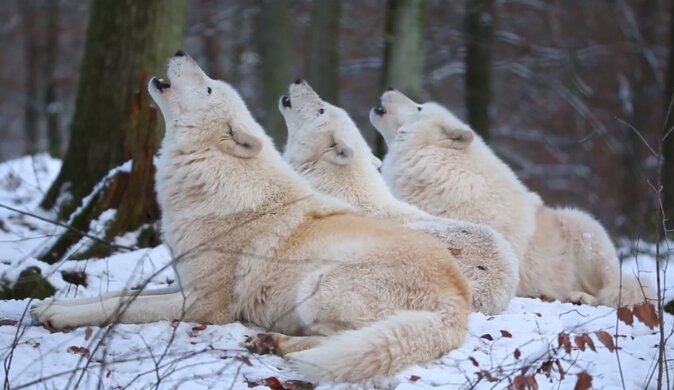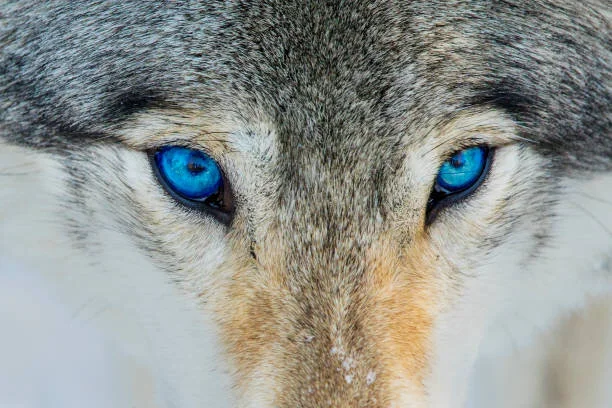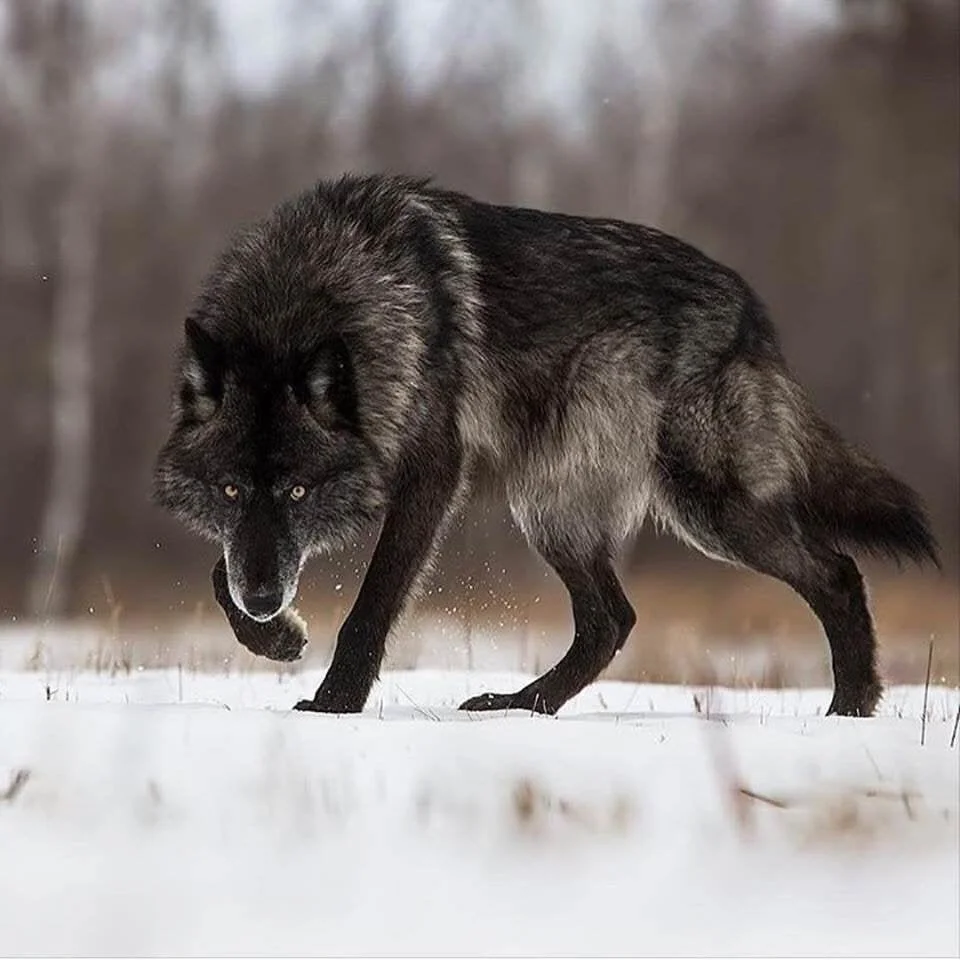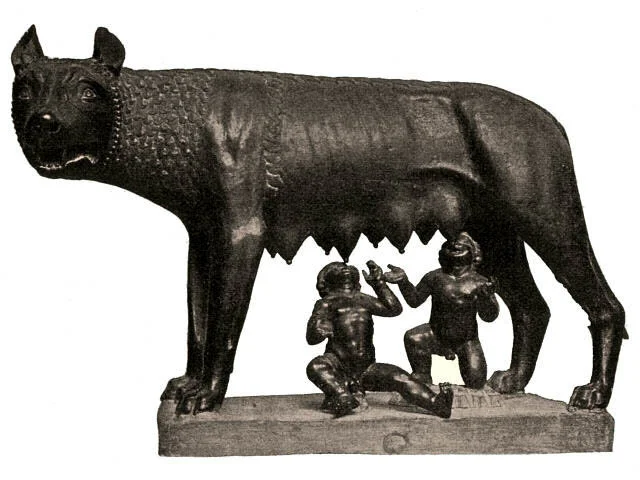By The Landlord
"Listen to them. Children of the night. What music they make." – Bela Lugosi in Dracula, 1931
“All stories are about wolves. All worth repeating, that is.” – Margaret Atwood, The Blind Assassin, 2000
“For the strength of the pack is the wolf, and the strength of the wolf is the pack.” – Rudyard Kipling, The Jungle Book (1894)
“.. the wolf,
Whose howl's his watch, thus with his stealthy pace,
With Tarquin's ravishing strides, towards his design
Moves like a ghost.” - Shakespeare, Macbeth
"He's mad that trusts in the tameness of a wolf.” – Shakespeare, King Lear
“We have doomed the wolf not for what it is, but for what we deliberately and mistakenly perceive it to be — the mythological epitome of a savage, ruthless killer — which is, in reality, no more than the reflected image of ourself.” – Farley Mowat, Never Cry Wolf (1963).
“When the long winter nights come on and the wolves follow their meat into the lower valleys, he may be seen running at the head of the pack through the pale moonlight or glimmering borealis, leaping gigantic above his fellows, his great throat a-bellow as he sings a song of the younger world, which is the song of the pack.” – Jack London, The Call of the Wild (1903)
“There are, of course, several things in Ontario that are more dangerous than wolves. For instance, the step-ladder.” – J.W. Curran, The Canadian Wildlife Almanac (1981)
That thick, voluminous fur, the twitching ears, that royal snout, the razor-sharp teeth, the non-wagging tail, the long, strong, ready to spring legs. But perhaps what’s most striking about a wolf is its eyes, bewitching, piercing, a wild whorl of bright sky and dark night, some almost unnaturally bright, light blue or yellow, ambiguous, unpredictable, a mixture of fear, nobility, tenderness, fierce intelligence, and ruthless focus.
The eyes have it
Homo homini lupus est. It’s no wonder that the wolf is such an inspiration for story, myth, old poetry and its own evolutionary hound – song. That Latin phrase, meaning “a man is a wolf to another man” first appeared in the work of Roman playwright Plautus, and has been adopted by many others from Thomas Hobbes to Sigmund Freud. In the most extreme conditions, humans will compare themselves with, and behave like wolves, but in what way? Compete or tear each other apart - dog eat dog - or hunt and collaborate as a team? Both, perhaps.
Yet there is also something endlessly appealing, hopelessly romantic even, about the profile of the wolf to a songwriter – someone who wants to be part of a pack, a band of other wolves, perhaps even leader of it, but also must act at times as a lone wolf to prowl and seek our the extremities of their own soul, to forage in the woods and wildlife of inspiration, and then … write.
There are still perhaps no greater works of writing about the life of the wolf than Jack London’s Call Of The Wild, the story of a large dog, Buck, a domesticated canis familiaris, in Yukon, Canada, who by misfortune, eventually finds his calling in a pack of wolves, his status earned by violent fang and claw, to become an established part of the clan, of canis lupus, reclaiming his evolutionary history.
“In this manner had fought forgotten ancestors. They quickened the old life within him, the old tricks which they had stamped into the heredity of the breed were his tricks... And when, on the still cold nights, he pointed his nose at a star and howled long and wolflike, it was his ancestors, dead and dust, pointing nose at star and howling down through the centuries and through him.”
And it is through the nightly howl that this connection is at its most profound:
“It was an old song, old as the breed itself - one of the first songs of the younger world in a day when songs were sad. It was invested with the woe of unnumbered generations, this plaint by which Buck was so strangely stirred. When he moaned and sobbed, it was with the pain of living that was of old the pain of his wild fathers, and the fear any mystery of the cold and dark that was to them fear and mystery. And that he should be stirred by it marked the completeness with which he harked back through the ages of fire and roof to the raw beginnings of life in the howling ages.”
Let’s have a listen, first, with a hark back to that immortal line, somewhat comical line spoken by Bela Lugosi as Dracula in 1931:
And now to the real call of a beautiful white wolf:
So then this week’s topic is all about the Canis lupus, also known as the wolf, grey wolf, native to North American continent and Eurasia, variously hunted to near-extinction, including in the UK, but with a new potential plan to reintroduce into Scotland as a natural way to control the deer population. Songs might mention the wolf by name, literally, metaphorically, in myth, or fictionalised versions, anthropomorphised into werewolves, teen wolves or any other form, perhaps also incorporating established idioms such as packs of wolves, crying wolf, being thrown to the wolves, wolf in sheep's clothing.
In terms of physical definition, let’s concentrate on canis lupis itself, of which there are around 30 subspecies, as opposed to their cousins the jackal, fox, dingo, or the many forms domesticated dog, descended from a common ancestor around a million years ago. As far as songs are concerned, wolf is the word and the word is the wolf here, whether they be white, brown, grey, black, or as in the Arctic region, often entirely white.
The image of the wolf is never entirely black. or white
Songs might refer to past species too, such as the dire wolf, made famous again in George RR Martin’s Game of Thrones series as the sigil of the Stark family, with a number of pack companions. The dire wolf did actually exist, a larger species, that lived in North America, along with its extinct competitor Smilodon and eastern Asia during the late Pleistocene and early Holocene epochs (around 125,000–9,500 years ago).
Much song inspiration may come from fairytales, from stories for Old Norse mythology of Fenrir or Fenrisúlfr to Grimm, Little Red Riding Hood, The Wolf and the Seven Young Goats, Joseph Jacobs’s Three Little Pigs, or indeed a famous piece of music by Sergei Prokofiev, all of which portray the wolf as an evil force preying on the innocent.
And there are other tales that portray the wolf in a more human-connected way. “The story of Romulus and Remus being suckled by a wolf is not a meaningless fable,” says the philosopher Henry David Thoreau. The tale of the twin brothers with events that led to the founding of the city of Rome, begins when they are abandoned by the River Tiber by order of a jealous king, and they are given milk by a she-wolf known as the Lupercat in a cave before being found and brought up by a shepherd. It doesn’t end well for Remus, of course, as Romulus eventually kills his twin. So who is the most deadly animal then, man or wolf?
Teet total: La Lupa Capitolina (the Capitoline Wolf), with sculptures of Romulus and Remus being suckled. The wolf-figure is Etruscan, 5th century BC, but the twins may have been added in 13th or 15th centuries AD
But other wolf adoption stories are more positive. Rudyard Kipling’s The Jungle Book, made even more famous by Disney, shows the human “man-cub” Mowgli adopted by a pack of wolves, headed by Akira in an Indian jungle, an example of Kipling using Hindustani names for various species of animals. But of course Mowgli’s connection to the pack is ambiguous and difficult, as his man origins also represent a threat.
And other human-wolf relationships get much closer, perhaps too close. Not least of course in the form of the mythical werewolf, wherein the human, bitten by one, turns into beast on the full moon. Let’s enjoy two film examples, first in 1941’s The Wolf Man, starring Lon Chaney:
By contrast, it shows just how far evolution can go when you compare it to the brilliantly dark comedy by John Landis in 1981, American Werewolf in London, with a sequence that inspired Michael Jackson’s Thriller.
And then there’s Neil Jordan film - Company of Wolves (1984) based on an Angela Carter novel, which intersperses many tales, and has a particular fondness for finding heads in big buckets of milk. Beware of men whose eyebrows meet in the middle. Would that include Noel and Liam Gallagher?
Wolves of course have many redeeming features, from their fierce family pack loyalty to being monogamous as pairs and have a strict survival code, which perhaps gives them a nobility alongside their ruthless hunting and scavenging side, so let’s hope that whatever songs come up, there’ll be a variety of characteristics to cover this complex creature.
It’s impossible to keep the wolf from the door of the Song Bar, with many packs of visitors eager to say more about it, but often also in relation to themselves. Here’s more from Margaret Atwood from The Blind Assassin about the all-encompassing wolf narrative.
“All stories are about wolves. All worth repeating, that is. Anything else is sentimental drivel. …Think about it. There's escaping from the wolves, fighting the wolves, capturing the wolves, taming the wolves. Being thrown to the wolves, or throwing others to the wolves so the wolves will eat them instead of you. Running with the wolf pack. Turning into a wolf. Best of all, turning into the head wolf. No other decent stories exist.”
“The wolf that one hears is worse than the orc that one fears,” says J. R. R. Tolkien in Lord of the Rings.
But away from metaphor, what about the reality. Shaun Ellis is an English animal researcher who is notable for living among wolves, and for adopting a pack of abandoned North American timber wolf pups:
“Wolves don't suffer things like guilt or remorse. They don't have any problems with the amount of discipline that they give to a fellow pack member, because in their world, the family is what matters, not the individual. So when you go in with a pack of wolves, you have to leave your emotions at the gate. When you come back out, it's very difficult to pick those emotions back up again.”
Neil Gaiman and Terry Pratchett meanwhile like to draw on the comparison with domesticated dogs and their wolf cousins, in Good Omens: The Nice and Accurate Prophecies of Agnes Nutter, Witch (1990):
“There are some dogs which, when you meet them, remind you that, despite thousands of years of manmade evolution, every dog is still only two meals away from being a wolf. These dogs advance deliberately, purposefully, the wilderness made flesh, their teeth yellow, their breath astink, while in the distance their owners witter, "He's an old soppy really, just poke him if he's a nuisance," and in the green of their eyes the red campfires of the Pleistocene gleam and flicker…”
The wolf is very much part of the Russian landscape and the language of its ruthless politics.
“If you are afraid of wolves, keep out of the woods,” wrote Joseph Stalin, about the Draft Constitution of the U.S.S.R., 25 November 1936. And later, "If you live among wolves you have to act like a wolf,” remarked Nikita Khrushchev.
Wolves are often referenced in sexual relationships. “ Woman to a man is either a god or a wolf,” says Flamineo, in John Webster's The White Devil (1612).
Glamorous Hollywood star Lana Turner has a response to that: ”Indeed. A gentleman is simply a patient wolf."
Perhaps all have a wolf within us. ”The wolves in the woods have sharp teeth and long claws, but it's the wolf inside who will tear you apart,” says Jennifer Donnelly. “Yes. In the calm, deep waters of the mind, the wolf waits,” adds F.T. McKinstry. And two complete that trio, “The gaze of the wolf reaches into our soul,” says Barry Lopez, the American writer who lived in rural western Oregon and drew heavily on the culture of Native Americans, Eskimos and Aborigines.
But that’s enough prowling around in the woods of history and culture from me. Now it’s over to our our own pack of music lovers, and this week, leading us into the wonderful musical wilderness and back again is the superb shepherding skills of Severin! Place your song suggestions in comments below by 11pm Monday UK for playlists published next week. Who will be in the final pack? It’s your call (of the wild).
He’s watching, and listening …
New to comment? It is quick and easy. You just need to login to Disqus once. All is explained in About/FAQs ...
Fancy a turn behind the pumps at The Song Bar? Care to choose a playlist from songs nominated and write something about it? Then feel free to contact The Song Bar here, or try the usual email address. Also please follow us social media: Song Bar Twitter, Song Bar Facebook. Song Bar YouTube, and Song Bar Instagram. Please subscribe, follow and share.
Song Bar is non-profit and is simply about sharing great music. We don’t do clickbait or advertisements. Please make any donation to help keep the Bar running:






